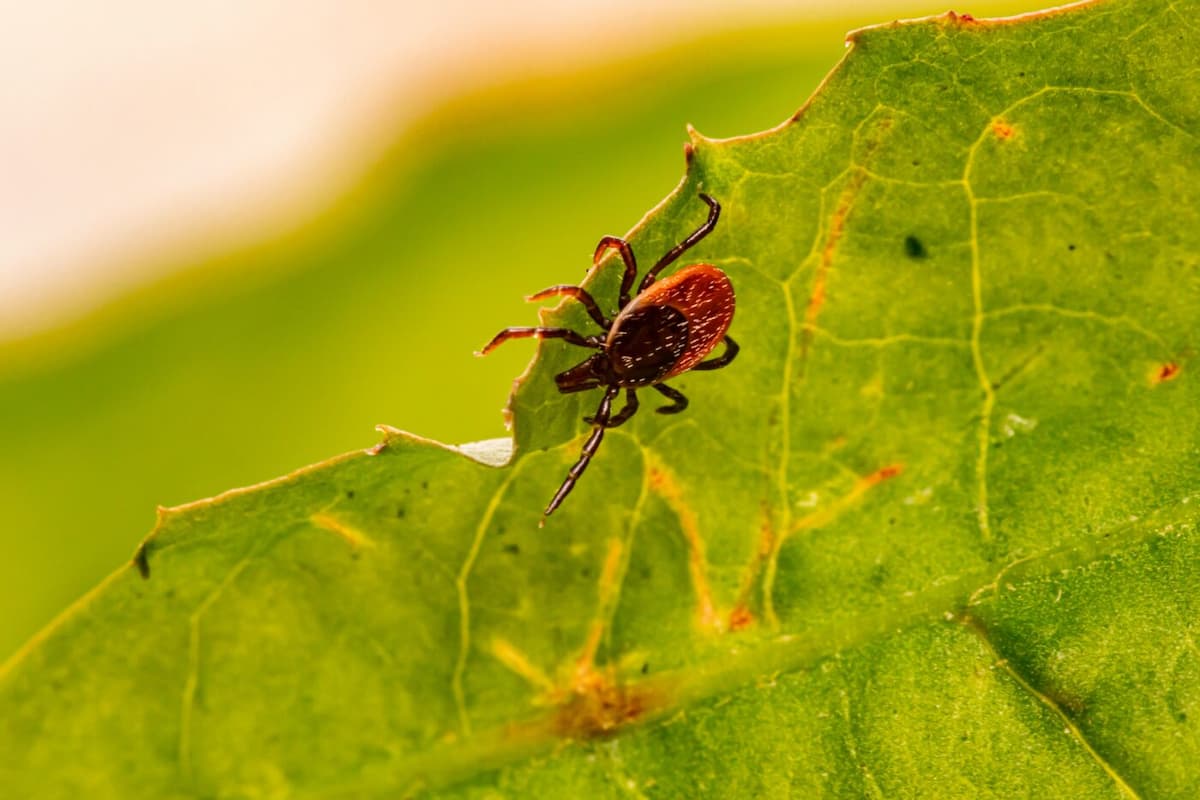Tips for Tick Season

With COVID-19 still at the forefront of our thoughts, there’s another health hazard to keep an eye out for this spring and summer—ticks. While it’s important to continue to follow CDC guidelines when heading outdoors, including wearing a face mask and maintaining at least six feet of physical distance between you and another person, its also important to follow these tips for tick season to avoid catching a tick-borne illness, like Lyme disease.
Keep them off you
The easiest way avoid a tick bite is to never get ticks on you in the first place. Ticks hang around in the leaf litter of the forest floor, in grasses and meadows, and on low bushes where they climb up to wait for a passerby to brush against them.
If you can avoid those environments, you should be safe. In reality, if you’re an outdoor lover in the Northeast and spend any time in the woods or even in your yard, it’s really hard to avoid places that ticks could inhabit.
If you are out in tick country, wear light colored pants and socks to make ticks easier to spot and consider tucking your lower pant legs into your socks so ticks can’t crawl up underneath your clothing. Check your lower extremities regularly for ticks—if you find one or two, there are likely many more about and you should adjust your behavior accordingly.
You can amp up the defenses around your feet, ankles, and lower legs with permethrin or by investing in a product like the Lymeez Tick Gaiters.
If you have a dog, keep in mind that your canine buddy is a prime tick vector. Check their legs, head, and neck immediately after any walk in the woods, consider using a flea comb on them to find any hidden ticks, and use a tick repellent like Frontline.
Tick check, tick check, tick check
If you’re out and about in tick country, check yourself and your loved ones top to bottom at least once daily, paying special attention to the warm, moist crevices ticks like to seek out before digging in, including along the hairline.
Keep in mind that ticks come in different sizes depending on their stage and sex and that the teeniest disease-carrying version is the nymph, which is no bigger than a poppy seed—so look closely. Nymphs are most common in spring and early summer in line with ticks’ two-year, three-stage life cycle.
If you find a tick crawling on you and it has not yet dug in to your skin, move on to the next step.
Kill them
If you do find a tick crawling on you, you’ll need to kill it. Ticks are surprisingly difficult to annihilate, however—you can’t crush them between your fingers, squash one with your shoe, or drown them (they can survive a trip through the washing machine, for example). My preferred outdoors method is to grind them between two stones; if I find one in the house, I flush it down the toilet.
One of my other favorite tricks is to crisp them in the dryer. Ticks need moisture and damp environments to live and are acutely sensitive to dry conditions; they will quickly wither in a short 10- to 15-minute cycle in the dryer. So oftentimes when I’m out for a while in potentially tick-infested woods, I’ll strip my clothes and throw them all in the dryer for a spin cycle of death for any ticks who may have hitched a ride.
If necessary, pull them out
If you find a tick on you that has already bitten you, don’t panic. First, a tick must be attached at least 24 hours before it can transmit Lyme disease, so if it just happened today, you’re likely OK.
If you’re not sure how long it may have been attached, you can also get a sense by how securely it’s dug in when you go to pull it out. Ticks secrete a bonding agent, or ‘cementum,’ over many hours after they first bite to more securely attach themselves. If the tick easily comes out, it likely hasn’t been attached that long. If it really resists before coming free, it’s probable been there for awhile.
You can use a range of tools to properly remove a tick, with a pair of sharp-pointed tweezers. I personally like the Pro-Tick Remedy, though other good options are available.
If you’re concerned that you may have potentially been exposed to Lyme disease from a tick bite, consider first saving the tick you removed so you can potentially show it to your doctor if and when you develop symptoms. And be watchful for any Lyme-like symptoms in the days and weeks after the bite.
Keep in mind, also, that a large number of people who get Lyme disease never saw the tick that bit them, so even if you never find a tick, consider whether you’ve been out in tick country if you develop any symptoms. The good news is that, unlike COVID-19, Lyme disease is easily treatable with a course of antibiotics if caught in its early stages.
Be well and be safe out there!




